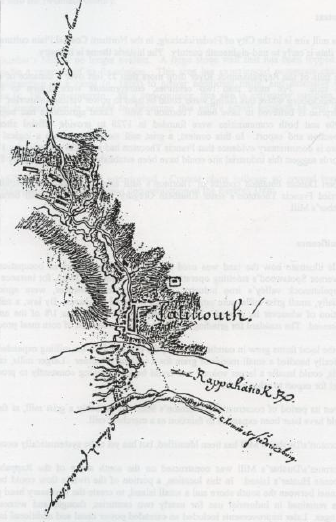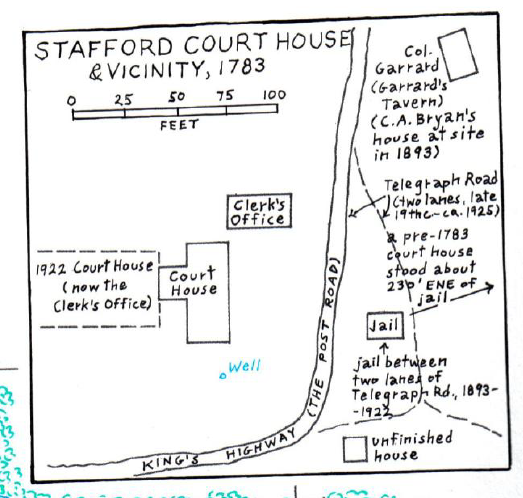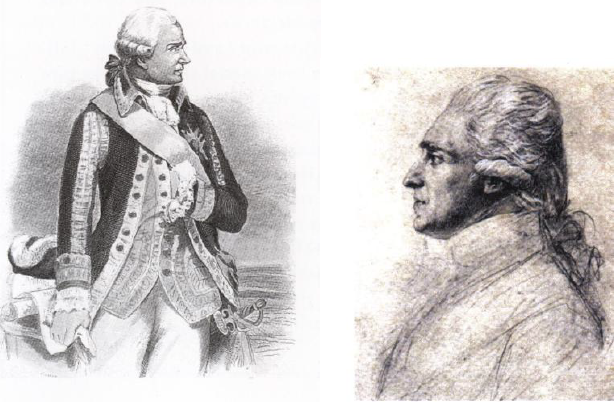The French and General Rochambeau
General Count Donatien de Rochambeau and French Troops traveled through Stafford in mid-September 1781. In fact, French Army troops of Rochambeau twice used Falmouth ford. General George Washington, in New York, planned use of the 5,000-man French expeditionary force. When he became aware the French fleet was headed for the Chesapeake from the West Indies, he directed his forces to the Virginia Peninsula. Washington wrote to Rochambeau and his Continental troops, on the march south:
From [Georgetown] a rout must be pursued to Fredericksburg, that will avoid an inconvenient ferry over Occoquan, and Rappahannock river at the Town of Fredericksburg. The latter may, I believe, be forded at Falmouth…

After the Yorktown victory in October 1781, Washington and his French allies moved north through Falmouth. A French engineer sketched the ford at Falmouth. It is estimated that 4,000 French troops and 2,500 Continentals crossed at the ford. [Erik F. Nelson.]

The Washington-Rochambeau movement actually split at Annapolis, Maryland. A sea column went by ship to the Yorktown area and the land column moved through northern Virginia through Stafford. The column passed near the site of today’s Stafford Courthouse en route to Falmouth.
Another interesting fact is the free black man John DeBaptiste operated the ferry across at Falmouth. His “Publick Claim” sought recompense for 8 days transporting French troops across the Rappahannock River in May 1783 on their return northward journey from Yorktown.

